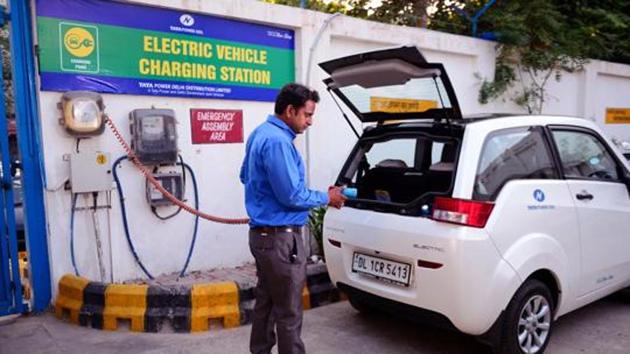Past experiences should guide us in rolling out electric vehicles
The ministry of urban development (MoUD), now known as the ministry of housing & urban affairs (MoHUA), approved around ₹5,000 crore for the bus-funding scheme in 2009. As per the scheme, MoUD jointly funded procurement of around 15,000 buses for public transport in 65 Indian cities.
Last week, the department of heavy industry (DHI), Govt of India, organised a stakeholders’ consultation workshop for electric buses. The one-day workshop was attended by various departments from the national, state, local governments and research organisations. The workshop was meant to discuss the details around the roll-out of about 7,000 odd electric buses, which the central government intends to support under the second version of Faster Adoption and Manufacturing of (Hybrid &) Electric Vehicles scheme, commonly known as Fame 2. Therefore, getting feedback from various stakeholders is welcome. However, the biggest learning would come from looking at the funding of buses under the erstwhile Jawaharlal Nehru National Urban Renewal Mission (JNNRUM) scheme.

The ministry of urban development (MoUD), now known as the ministry of housing & urban affairs (MoHUA), approved around ₹5,000 crore for the bus-funding scheme in 2009. As per the scheme, MoUD jointly funded procurement of around 15,000 buses for public transport in 65 Indian cities. Seeing the positive response, the scope for funding was expanded and additional 10,000 buses were made available to all cities.
The scheme was a game changer of sorts for public transport in India. However, the on-ground results were a bit mixed and that’s what the DHI should learn in order to take the FAME 2 implementation forward. Let me highlight three lessons from the JNNURM scheme that should be kept in mind for implementing the scheme for electric buses.
Under the JNNURM scheme, the Central government supported the cities to procure buses. Depots, terminals, bus stops and other infrastructure facilities were left to the cities to develop. This worked well in geographies that had strong state transport undertakings (STUs), mostly in the southern states. In other places, cities and states just couldn’t develop the support infrastructure. The result was that at many places, buses were parked on the roads with little maintenance. This reduced the life of the buses drastically and they became obsolete sooner than later. Therefore, under the FAME 2 scheme, electric buses along with the support infrastructure should be funded by the central government. This is even more critical for electric buses, as infrastructure is the key to their operation. If the central government is unable to fund the entire cost of the support infrastructure, it should ensure that funding is only available to cities that develop the entire system.
The JNNURM bus funding scheme came up with an urban bus specification. This was done so that cities can procure a modern city bus instead of bodies that were built on truck chassis and ran as buses. This was truly a welcome step. However, the focus was only on the placement of purchase orders. This resulted in many cities buying buses even if they were lying idle. Therefore, it is important that the FAME 2 scheme should focus on the outcomes which are the operation of electric buses in these cities. One way to do it would be that instead of supporting the buying of buses, they should support the operation of buses. Therefore, cities can procure the operation of electric buses on a one-kilometre basis from the private sector. This will do two things — first, it will make sure that the buses are operating and second, since electric buses constitute a new technology, the risk of performance, maintenance, etc will be borne by the private sector.
Under the JNNURM scheme, cities were asked to issue tenders and procure buses following the guidelines from the Centre. This again worked well in states that had strong STUs. In other places, cities did not have the capacity to even understand the specification of buses. This resulted in repeatedly failed tenders and extreme delay in procurement. The lack of capacity at the city level also gave an opportunity to the manufacturers to sell what they have rather than what cites want. This may also be a major issue in the FAME 2 scheme. One way to overcome this would be to find a mechanism for a central procurement. DHI or any other central agency can aggregate demand from various cities, assess their readiness in terms of infrastructure and then carry out bulk procurement for various cities. The bulk orders will not only result in cheaper rates but will also make sure that buses are delivered on time.
Fourteen out of the 15 most polluted cities are from India. Studies show that 30% of PM (particulate matter) 2.5 emissions come from vehicular exhaust in cities like Delhi. Therefore, the ₹ 10,000 crore FAME 2 scheme by the central government is a good start.
However, the success of the scheme will lie in its implementation. One way to do an effective implementation would be to learn from past experiences. Confucius, the great Chinese philosopher once said ‘study the past if you would define the future’.
Stay updated with all the Breaking News and Latest News from Mumbai. Click here for comprehensive coverage of top Cities including Bengaluru, Delhi, Hyderabad, and more across India along with Stay informed on the latest happenings in World News.
Stay updated with all the Breaking News and Latest News from Mumbai. Click here for comprehensive coverage of top Cities including Bengaluru, Delhi, Hyderabad, and more across India along with Stay informed on the latest happenings in World News.






